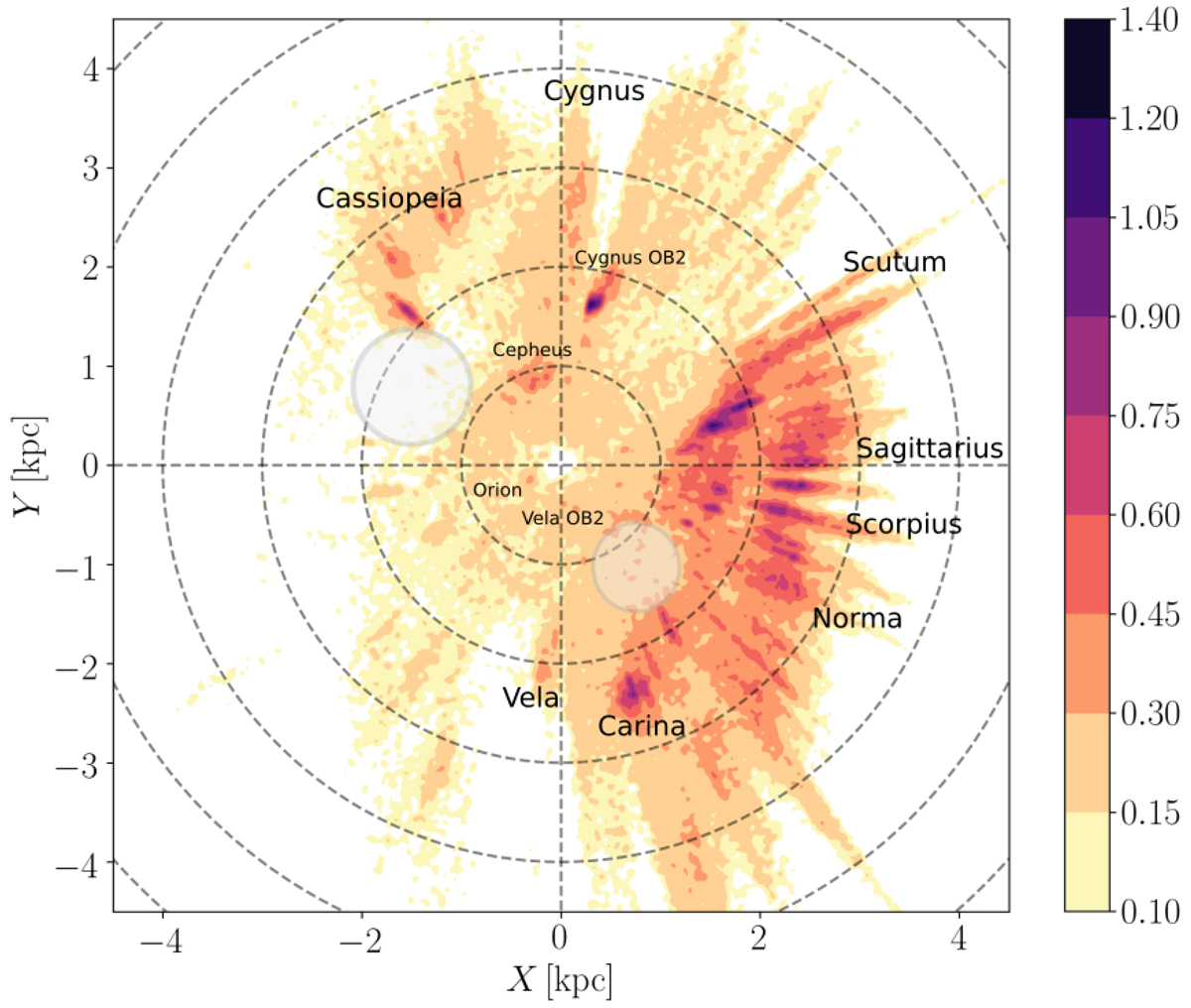Targeting Overview

MWM is targeting OB stars using their high luminosities and blue intrinsic colors. The main sample selection is done in the spirit of the SDSS-V requirement of a known and well-defined selection function, and is therefore based on Gaia DR2 photometry and astrometry combined with the 2MASS photometric information. First, all objects whose absolute magnitude in the K photometric band is smaller than -0.61 are selected, which roughly corresponds to a B3 main-sequence star. Ultimately, several color cuts are applied to clean the sample from intrinsically bright red giant- and asymptotic giant-branch stars, as well as from objects with unnaturally blue colors. The target selection and its rationale is described more fully in Zari et al. (2021). In addition, a few thousand Cepheids from the catalog of Inno et al. (2021) are targeted. All of the targets in this program can be identified with the mwm_ob program name or the ob alternative program name.
Additionally, MWM targeted a few hundred OBA eclipsing binaries (EBs) with intrinsically photometrically variable components to obtain multi-epoch observations under a separate program name (mwm_tessob). The selection is made to maximize the chance that EBs are double-lined (SB2) and that the targets have detectable asteroseismic oscillations. The latter condition is met by looking at TESS light curves in the continuous viewing zones (CVZs) and preselecting those with rich, and ideally highly structured, pulsation patterns. Unfortunately, because these stars are relatively rare and the desired observing cadence relatively expensive, very few of these stars would be fully observed in SDSS-V, and the carton has since been withdrawn. Follow-up observations are being pursued with different observational resources.
Cartons
mwm_ob_core
The core OB carton maintained the same name and selection function for both the plate era and FPS era observations (targeting generation 0.1.0 and 0.5.3, respectively). The target selection utilizes photometry from both the 2MASS Point Source Catalog and Gaia DR2 together with parallaxes (in mas) and ruwe from Gaia DR2. The bolded selection criteria below are common to both versions of the carton.
- parallax < 10((10-K-0.61)/5)
- G < 16
- G > 12 (plate era only)
- J-K-0.25(G-K) < 0.10
- J-K-0.25(G-K) > -0.30
- J-H < 0.15(G-K)+0.05
- J-H > 0.15(G-K)-0.15
- J-K < 0.23(G-K)+0.03
- G > 2(G-K)+3.0
- Cross-match separation between Gaia DR2 and 2MASS < 1″
- ruwe < 1.4
mwm_ob_cepheids
This carton, targeting cepheids from the Inno et al. (2021) catalog, also maintained the same name for both the plate era and FPS era observations (targeting generation 0.1.0 and 0.5.3, respectively). The plate era carton imposed a Gaia DR2 magnitude limit of G > 12.
manual_mwm_tess_ob
This carton was introduced in the FPS era. Starting with 3425 of the high confidence eclipsing binary candidates identified by Ijspeert et al. (2021), we selected 582 systems within the CVZs of TESS. All targets are inspected visually to ultimately select 364 systems that show (i) pronounced primary and secondary eclipses (to maximize the chance of their SB2 nature), and (ii) intrinsic variability resembling stellar pulsations (to allow for future asteroseismic modeling).
mwm_tess_ob
This carton was a placeholder carton containing a random selection of stars in the TESS CVZ, to test the feasibility of observing an expanded sample of high mass eclipsing binary systems.
Cadences
During plate observations, OB stars primarily observed with the BOSS spectrograph. However, some stars may also have obtained APOGEE spectra due to substantial overlap with a plate-era YSO carton. These stars could be observed on any plate except those with an RM cadence.
During FPS observations, all mwm_ob program cartons obtain 3 epochs of BOSS spectra under the bright_3x1 cadence.
Stars in the mwm_tessob program require 8 epochs and between 1 and 4 exposures per epoch, depending on their 2MASS H-band magnitude as follows:
- H < 9.5: bright_8x1
- 9.5 ≤ H < 11: bright_8x2
- H ≥ 11: bright_8x4
